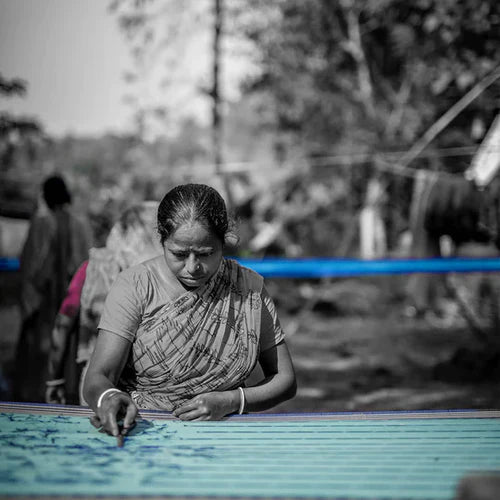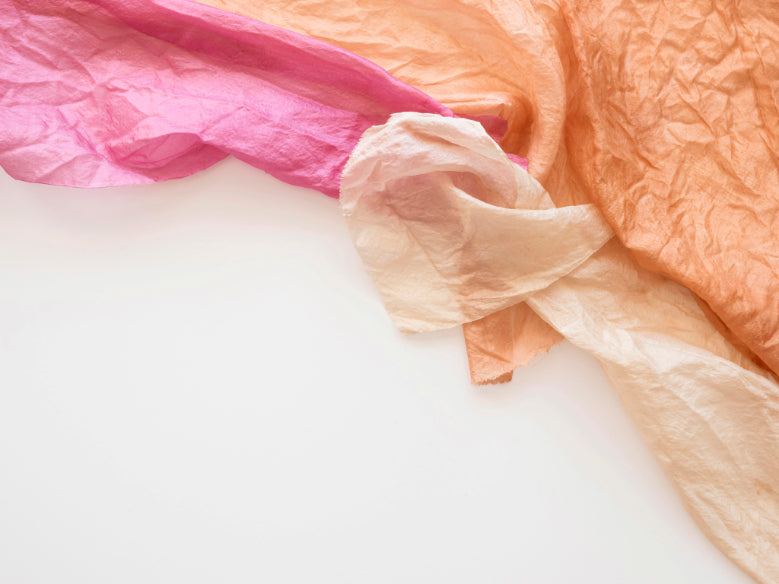
The Timeless Elegance of the Saree: A Journey Through History
Women in India, have been traditionally wearing sarees for centuries. Sarees are emblematic of grace, elegance, and cultural legacy. The 6 yards of craftsmen’s imagination and skill is a canvas that displays the rich tapestry of Indian culture, history, and artistry. Beyond its traditional origins to modern interpretations, in recent times the saree has evolved without losing its fundamental qualities. In this blog let us look at the genesis of saree - its rich journey through history.
The Origin and History of Saree
The word saree has its roots in Sanskrit. The Sanskrit word “sati” means a strip of cloth. Early mentions of saree can be seen in the Indus Valley Civilization (2800–1800 BCE) where strips of cloth were used as draped garments. Over the millennia, the saree has evolved from a basic piece of cloth to a garment full of artistic and cultural significance.
History of Saree in Ancient India
India saw significant cultural advancements under the Mauryan Empire (321 - 185 BCE) and the later Gupta Empire (320 - 550 CE). People from all walks of life wore cotton sarees, which served as a reflection of the richness and diversity of Indian society at the time. Simple motifs and patterns that reflected the artistic and cultural influences of the era were frequently used to embellish sarees.
Journey of Saree in the Medieval Era
The saree continued to evolve and adapt during the medieval era. With expanding trade routes and cultural influences from other regions increased, the saree incorporated new fabrics, designs, and styles.
The humble garment became increasingly ornate with elaborate zari work, embroidery, and embellishments. Silk and other opulent fabrics became popular among the royals and the affluent class.
Saree During the Mughal Era
The Mughals (1526 to 1857) introduced elaborate embroidery, rich textiles, and complex weaves and Persian influence to this garment. Sarees came to represent elegance and nobility, and each region created its own distinct style based on customs and culture.Among the many different saree traditions that became widely popular around this period were the Banarasi saree from Varanasi, the Patola saree from Gujarat, and the Kanjivaram saree from Tamil Nadu.
Saree During the Colonial Era
The saree underwent a substantial transition during the colonial era (1858-1947) in India. Influence of Western culture and fashion, as well as the changing social and economic landscape were visible in saree, drapes and accessories.
Western Influence
The Indian subcontinent was introduced to new textiles, fashions, and design elements with the arrival of European colonists. Western-inspired patterns and motifs, like geometric patterns and floral prints on saree gained popularity.
Intricate lace designs were noticed in both sarees and blouses which were worn by the royals from princely states, ladies in the families of zamindars, and many intellectuals.
Under British rule in India, women's roles and aspirations changed with growing numbers of middle-class and educational institutions. Once a representation of traditional femininity, the saree started to change to match these evolving goals.
Western-inspired saree styles gained popularity among women from the growing middle class, who incorporated details like narrower pleats and fitted blouses.
Saree the National Identity of Pre-Independence Movement
India’s struggle for independence has been a long one. The saree has endured as a representation of Indian identity and tradition in spite of the influence of Western culture. The saree rose to prominence as a potent symbol of nationalism and cultural resistance during the Indian independence movement. When Western fabric and clothes were denounced during the Swadeshi Movement Indian cotton saree became a sign of pride and defiance worn by female activists and leaders against colonial rule.
The Tale of Sarees in Modern Independent India
Following India's independence, the saree kept changing to reflect the nation's increased diversity and modernity. By experimenting with novel textiles, patterns, and draperies, designers produced modern saree styles that were appealing to a larger range of people.
In the early years, Bollywood played a significant role in popularizing the saree. The saree was a common attire for female characters in early Bollywood movies, reflecting the conservative social norms and traditional values of the era.
Bollywood's portrayal of women on screen and their fashion choices changed as the industry did. The saree evolved from a simple article of clothing to a representation of femininity, self-determination, and cultural identity. Today we find top actresses experimenting with saree styles, colours, and fabrics, stretching the limits of what was considered traditional clothing.
Conclusion
The saree is an enduring symbol of India's artistic talent and rich cultural legacy which never fails to enchant and inspire. From its humble beginning to its contemporary renditions it exudes glamour, charm and elegance like nothing else. Women all across the world are celebrating the saree as more than just a piece of clothing—rather, it's a legacy of grace, empowerment, and tradition.






